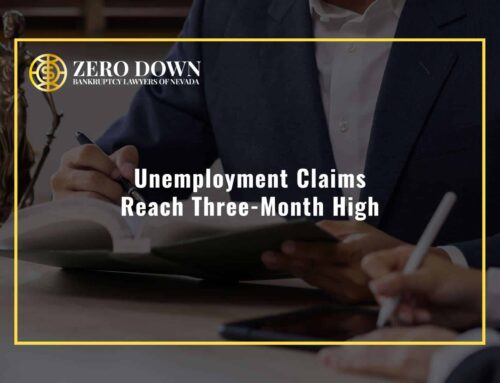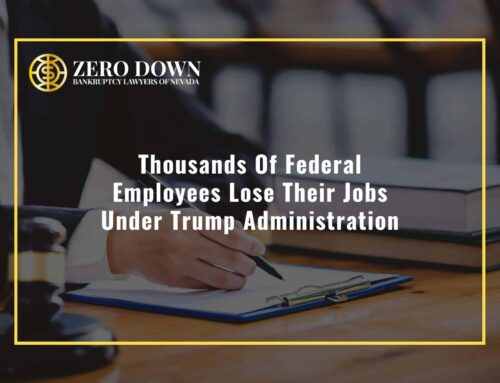If you’ve ever actually gone inside your bank for a transaction, you may have seen the signs indicating that the bank is covered by the Federal Deposit Insurance Corporation (FDIC). The FDIC insures bank accounts up to $250,000 in case of a bank failure. A scenario where someone’s bank fails and they are no longer able to withdraw funds seems like something that only happened during the Great Depression. However, Silicon Valley Bank, a financial institution majorly utilized by tech companies, suddenly collapsed over the weekend, including a mid-day takeover by the FDIC. You most likely aren’t one of Silicon Valley Bank’s clients that now needs to worry about retrieving your funds from your account. However, the collapse of a large bank could indicate further economic impact in the future.
Did Silicon Valley Bank File For Bankruptcy?
Bankruptcy is a legal procedure that allows businesses and consumers to deal with their debts while under protection from the court. Most consumers file either Chapter 7 or Chapter 13, with Chapter 7 being the more popular of the two. Large businesses usually file Chapter 7 or Chapter 11. Chapter 7 is an insolvency bankruptcy, forcing the business to shut down operations but distribute assets to creditors in the fairest way possible. Chapter 11 allows the business to stay in operation but with intense scrutiny by the court and its creditors. The business can maintain control of its day-to-day operations, but a panel of its top creditors will have final authority on more major decisions. Most businesses that suddenly shut down may file for Chapter 7 bankruptcy to keep their affairs in order during closing. But this isn’t quite what happened in the case of Silicon Valley Bank.
Silicon Valley Bank, along with many other financial institutions, has held many bonds and assets whose values haven’t kept up with rising interest rates. This usually doesn’t cause an issue, but it specifically did because of its focus on tech-based companies. There has been a recent increase in tech companies, specifically those that bank with Silicon Valley Bank, withdrawing from their accounts to fund business ventures. Because so much of the bank’s investments are held in long-term investments, they simply didn’t have the funds to pay out to all of their clients seeking to withdraw funds. Silicon Valley Bank then decided to sell some of its bonds at a loss to have the capacity to pay out its clients. This move scared its clients and investors, leading the account withdrawals to start rolling in. It happened so quickly that Silicon Valley Bank became insolvent in the middle of the business day.
On Sunday, March 12, 2023, the FDIC announced that they would be extending coverage beyond $250,000 for deposits at Silicon Valley Bank. More than 90% of accounts at the bank held more than $250,000, meaning they wouldn’t be fully insured by the normal FDIC protections. The government’s interest in extending extra protection to these probably wealthy institutions is that if they lose cash, they may not be able to keep paying their employees and running operations that could be crucial to the operation of other businesses. The FDIC also instituted a program for lending, since all of Silicon Valley Bank’s clients will inevitably need new banks. The move is also meant to instill national and international confidence in the USA’s economic system. Banks will be allowed to borrow money from the FDIC to deal with the potential incoming rush of new banking accounts being opened after Silicon Valley Bank’s closure. Borrowers who take advantage of this program will be entitled to lending at the face value of their bonds. Their interest rates will be .1% higher than market interest rates. This is to prevent a domino effect from happening, as U.S. banks hold about $620 billion in bonds and the financial effects could be devastating if the banks were forced to sell the bonds at a loss. The costs from this program are supposed to come from fees on banks rather than taxpayer funds, although this plan will serve to hurt smaller banks. Overall, the federal government wishes to ride out the current economic climate while hopefully preserving as many banks and other institutions as possible.
What Does The Current Economic Climate Mean For Me?
Times have been tough for everyone lately, including rich bankers focused in tech in Silicon Valley. The FDIC has already stepped in to try to prevent a ripple event from Silicon Valley Bank’s collapse. The only reason you might be affected is if you are a small bank owner who will be forced to pay a fee to help offset the costs of all of the FDIC’s new programs in response to the Silicon Valley Bank collapse. However, the collapse may also indicate that other businesses may suddenly fail in the future. This could mean sudden unexpected unemployment for an employee already facing a difficult housing market and sky-high inflation. Someone who loses their job may need to rely on credit cards and other lines of credit to make ends meet while looking for new employment. If the unemployment continues for too long, that debt may be nearly impossible to escape without a little help.
Someone who incurs too much debt will start to face a variety of negative effects. First, it will start with constant creditor calls, with some possibly bordering on harassment. If the debtor can’t pay off their debt or work out a payment plan with their creditor, what the creditor will do next will depend on what type of debt it is, among other factors. If the debt is a mortgage, the lender may initiate the home foreclosure process. If it is an auto loan, the lender can repossess the vehicle fairly quickly. Unsecured debts are those without an asset attached as collateral, so the creditor might file a lawsuit to collect compensation. The debtor will receive a summons that will give them a deadline to file a response and fight the lawsuit or accept a default judgment. A creditor can use a judgment to place a lien on the debtor’s property, garnish their wages, and more. This judgment will also cause damage to the debtor’s credit. Thankfully, filing bankruptcy can protect a debtor from all of these repercussions. In fact, once a debtor has retained a bankruptcy attorney, any creditors who have been informed must direct all of their calls to the attorney rather than the debtor personally.
Contact Our Arizona Bankruptcy Team For Your Free Consultation
Bankruptcy might not be the right call for everyone- however, many people hold misconceptions about bankruptcy. A debtor doesn’t have to give away all of their possessions when they file bankruptcy. Chapter 13 operates entirely differently than Chapter 7 and allows a debtor to pay off all of their debts- rather than discharge them- while under court protection. Bankruptcy could be a great way to shake off old debts and rebuild your credit, but there could also be reasons that it isn’t the best fit for you. The best way to find out is by discussing your situation with a knowledgeable Arizona debt relief lawyer at Arizona Zero Down Bankruptcy. To schedule your free consultation with our firm contact us through our online form or call us at 602-609-7000.
Arizona Offices
Phoenix Location:
343 W Roosevelt Street, Suite #100
Phoenix, AZ 85003
Email: [email protected]
Phone: 602-609-7000
Mesa Location:
1731 West Baseline Rd., Suite 101
Mesa, AZ 85202
Email: [email protected]
Glendale Location:
20325 N 51st Avenue, Suite #134
Glendale, AZ 85308
Email: [email protected]
Tucson Location:
2 East Congress, Suite #900
Tucson, AZ 85701
Email: [email protected]









